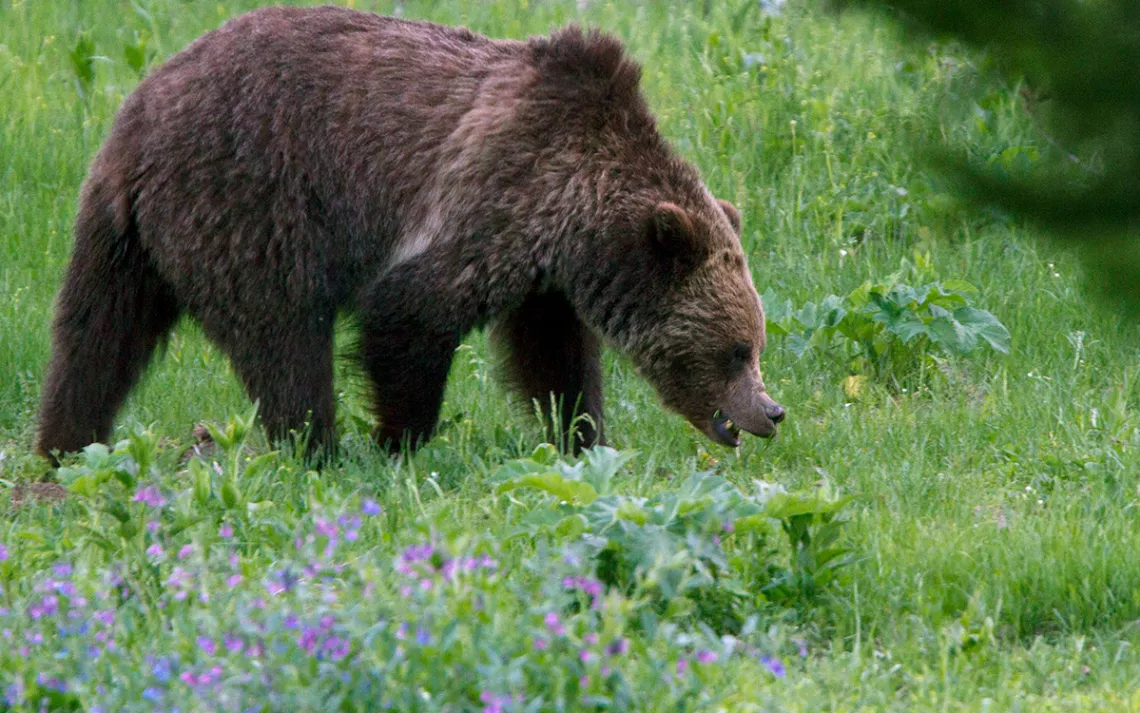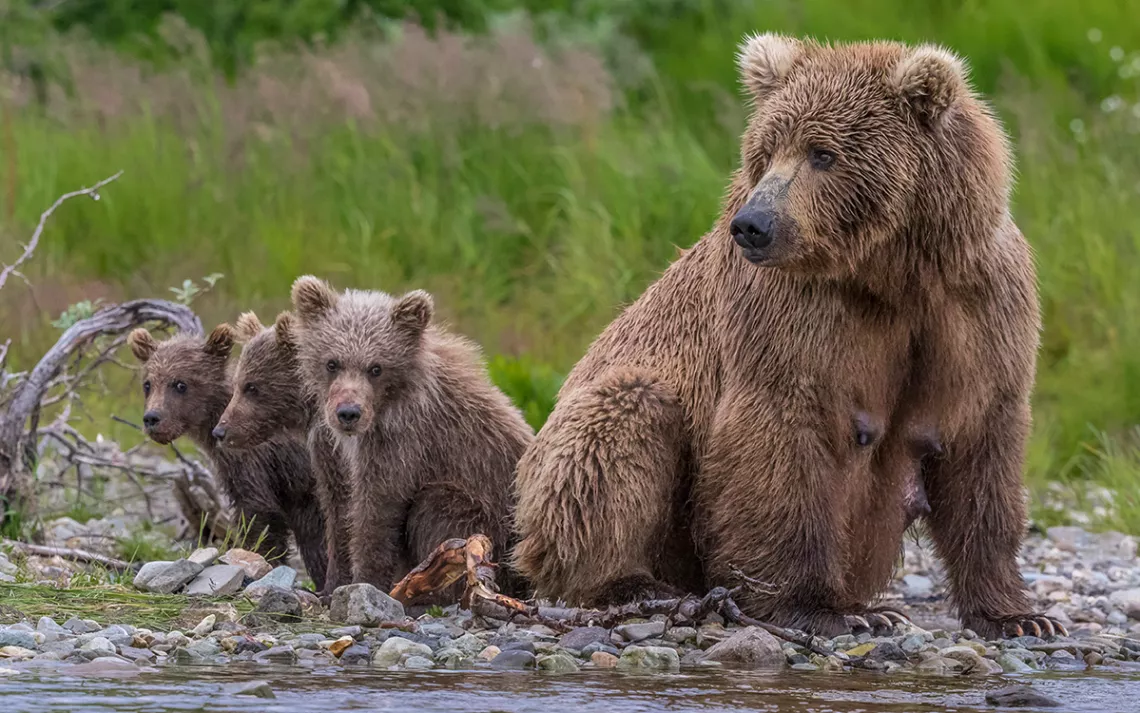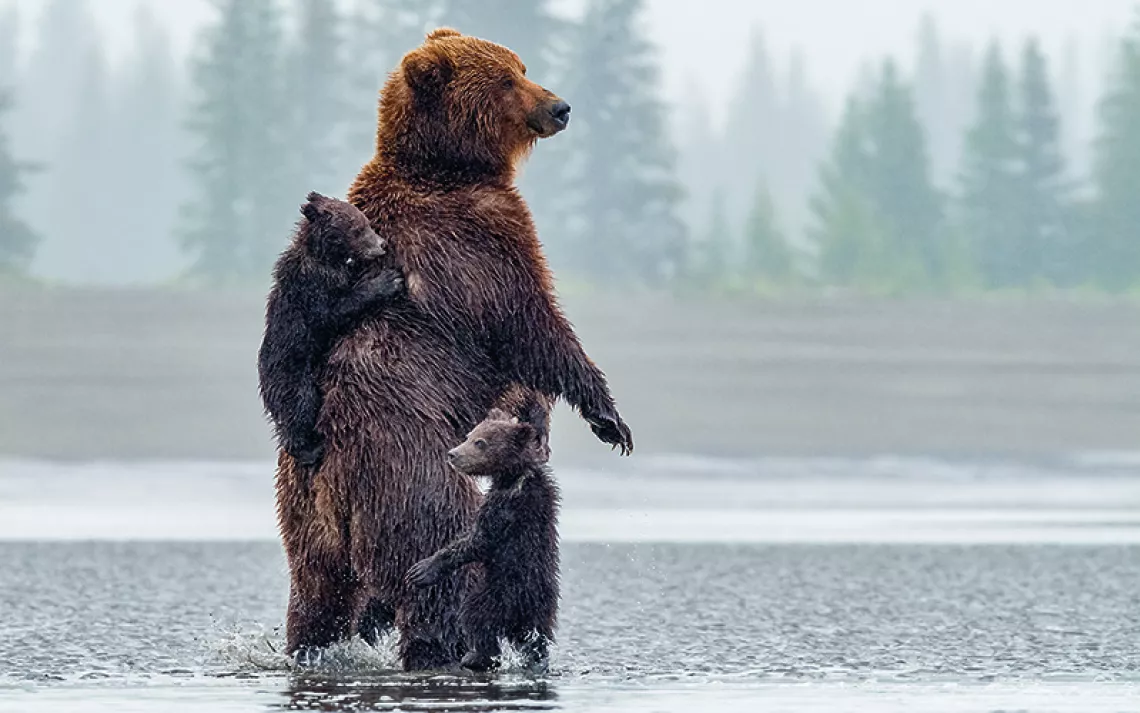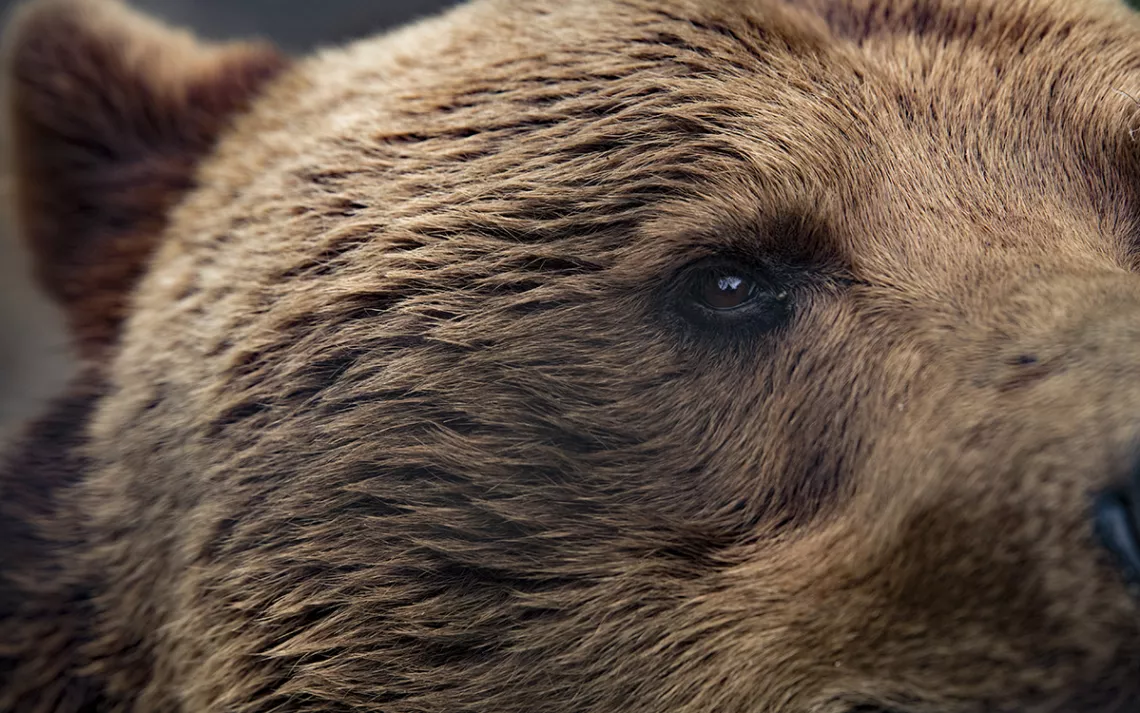The Death of Grizzly 399 Could Have Been Prevented
The car accident that killed the world’s most famous grizzly bear might have been avoided with a simple solution
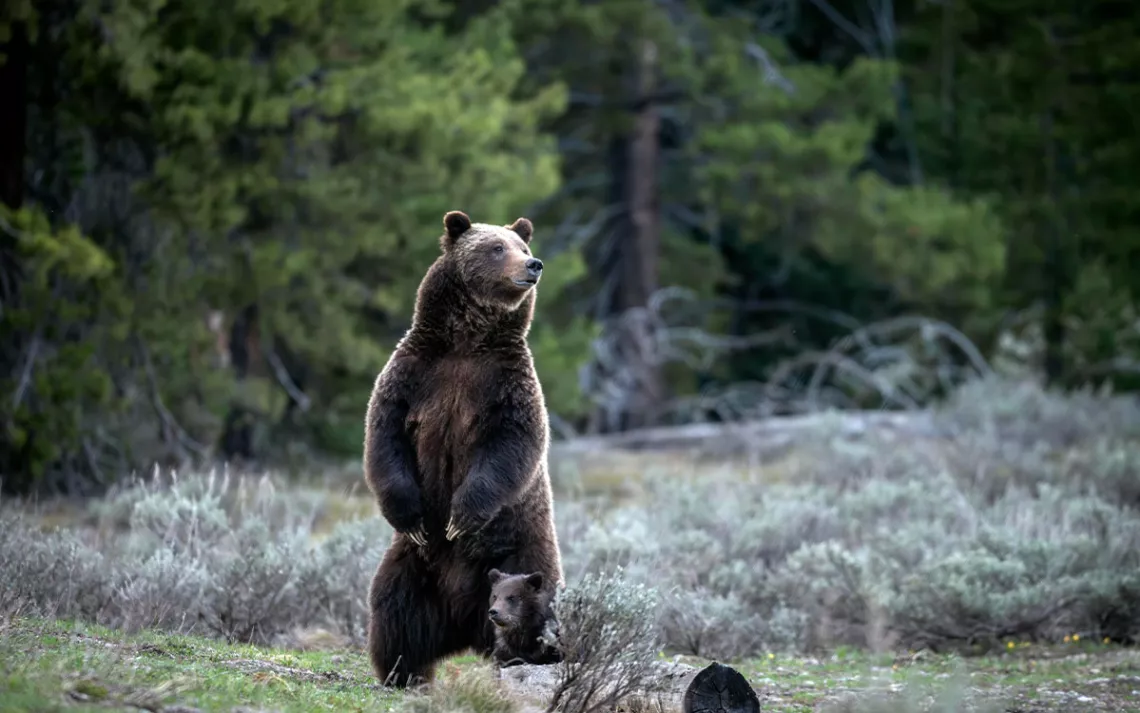
In this undated photo provided by Grand Teton National Park, a bear known as Grizzly 399 stands alongside a cub. | Photo by C. Adams/Grand Teton National Park via AP
You may not recognize her name, but you’ve almost certainly seen Grizzly 399.
Photos of her routinely rack up thousands of likes on social media. Earlier this year, Nature on PBS aired a documentary about her life—Queen of the Tetons. And, in 2018, 60 Minutes
ran a special on one of her most ardent admirers, wildlife photographer Thomas Mangelsen, who says he alone has taken upwards of 1 million images of the iconic grizzly. Throughout her nearly three-decade life, Grizzly 399 was photographed by pros and amateurs alike, immortalized in photos and celebrated by fans, who marveled at both her age (28) and number of cubs (18).
Now, those photos and recordings are all people have to remember her by. On the evening of October 22, she was killed in a car accident south of Jackson, Wyoming. The fatal incident occurred not too far from Grand Teton National Park, where millions of residents and tourists frequently clamored along roadsides to catch a glimpse of her with her cubs, causing bear jams that stretched hundreds of cars deep.
Kristen Combs, the executive director of Wyoming Wildlife Advocates, has been among the crowds adoringly watching Grizzly 399 for the past two decades. She marveled at the resilience of a bear who dodged poachers, reared four cubs at one time (the largest known litter of any Yellowstone grizzly), and adapted to a life of relative celebrity. In a twist of irony, the reason for 399’s fame—living so close to humans—might have been her undoing. Her familiarity with roads was a double-edged sword, Combs said. On display for millions of people, the bear was safe from other grizzlies and predators that may have killed her cubs. But it also increased the odds that she would be among the over 7,000 animals killed by vehicles in Wyoming annually.
“A lot of people commute from Alpine to Jackson because it's cheaper to live in Alpine, and people speed all the time,” Combs said. “There's still this idea that humans have the right-of-way wherever we go. We have to be doing things differently because we live in a special place.”
There is a relatively straightforward solution to Wyoming’s wildlife-vehicle problem. Wildlife crossings such as overpasses, underpasses, and culverts have been shown to reduce collisions by up to 90 percent when combined with fences that funnel wildlife to priority areas. But these projects tend to come with hefty price tags. One project in Wyoming that includes at least six crossing structures will likely cost the state over $30 million. This year, the state is trying to come up with $17 million to fund projects along Route 26, the road that 399 was hit on. The Greater Yellowstone Coalition and the WYldlife Fund have partnered to raise nearly $3 million to help the state reach its goal. These projects were borne out of a summit that identified over 200 areas in the state that could use wildlife crossings. While these structures will come too late for 399, there is good news.
There’s federal funding to help states build these structures. Last year, the Biden–Harris administration awarded Wyoming over $24 million to build overpasses, underpasses, and fencing near Yellowstone National Park. And Congress is currently considering new laws, such as the Wildlife Movement Through Partnerships Act, which would create a program to help states boost connectivity between core wildlife areas. That would give bears, which are an especially wide-ranging species, better access to quality habitat. Another proposed law that has lingered is the Wildlife Corridors and Habitat Connectivity Conservation Act. That bill would establish a program to monitor and study key wildlife corridors, the paths animals use to travel, to help states build better crossings.
Such information would be crucial to states looking to prevent bear collisions, as all crossings are not created equal. “Grizzly bear males are pretty content to use wildlife crossing structures, particularly overpasses,” Kylie Paul, a road ecologist at the Center for Large Landscape Conservation, said. “But females with cubs are particularly preferential of the overpasses. They tend to be more cautious, so it's important to ensure there is an overpass or a significantly large underpass if you're trying to support grizzly bear populations across a landscape bisected by highways.”
What’s needed now, Paul said, is continued funding to support these projects. While they tend to be expensive up front, building them can save money in the long run. “The community, the government, the public at large can save money over time if [wildlife crossings are built] in areas where there's high wildlife-vehicle collisions because then you've reduced or removed those costly collisions,” she said.
Many wildlife advocates hope that Grizzly 399's death can help raise awareness of how difficult it can be for animals to move across the landscape and an encouragement to states to build more crossings. As the human population grows, wildlife habitat is more fragmented than ever, forcing millions of animals to navigate an increasingly humanized world. Without better infrastructure that helps animals adapt, tragedies like the one that befell 399 will likely increase.
Grizzly 399 leaves behind at least one yearling cub named Spirit, who was with her when she was killed. The cub's whereabouts are unknown, but federal and state wildlife agents believe the animal is still alive; neither Wyoming Game and Fish nor US Fish and Wildlife plan to catch the cub. “Grizzly 399 wasn’t just an icon; she was family,” Mangelsen posted on his website. “She will always be our Queen of the Tetons, and her legacy will live on in our hearts forever.”
 The Magazine of The Sierra Club
The Magazine of The Sierra Club
